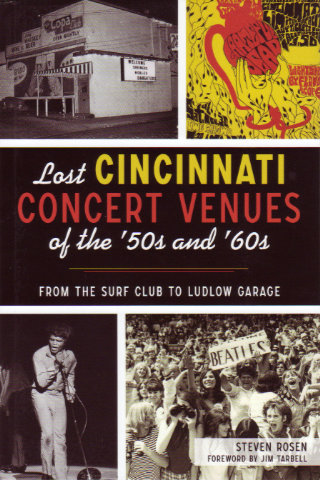
This book brought back some memories, corrected others, and filled in gaps I didn’t even know I had. And I was only here for the last quarter of the covered period. For the years before I moved to Cincinnati, it confirmed some rumors and filled in some blanks. Its author, Steven Rosen, has done an awful lot of writing both as an employee (Cincinnati Enquirer, Denver Post) and as a freelancer (NY Times, LA Times, Cincinnati Magazine, etc.). He is currently serving as Contributing Visual Arts Editor for Cincinnati CityBeat as well as continuing to freelance. With a resume like that, it’s surprising to learn that this is Rosen’s first book.
True to its title, the book is organized by the venues where concerts took place, but venues only matter because of the events they host, and those events are what is really at the heart of Lost Cincinnati Concert Venues of the ’50s and ’60s. The two venues in the subtitle are great examples. The Surf Club operated at the beginning of the 1960s and became known for hosting comedians like Lenny Bruce, Dick Gregory, Henny Youngman, and Phyllis Diller; musicians such as Sarah Vaughan, Peter, Paul, & Mary, and Julius La Rosa; and acts like The Smothers Brothers and Homer & Jethro who were a bit of both. Ludlow Garage rose at the end of the decade with performances by Alice Cooper, the Allman Brothers, Santana, the Kinks, and a whole bunch more. People may or may not remember that the Surf Club had taxidermied swordfish on the walls or that the Ludlow Garage had some really big chairs, but remembering where you saw Phyllis Diller or the Allman Brothers is a certainty.
Cincinnati is a border town with some Kentucky venues as accessible to residents as many in Cincinnati itself. Rosen’s first chapter is, in fact, titled “Northern Kentucky”. He acknowledges the Beverly Hills and Lookout House showrooms but seems to feel that their notoriety has brought them enough attention. He focuses on some lesser-known places like the Sportsman’s Club (where the Drifters once performed), the Copa Club (Miles Davis, Sam Cooke, and more), and Stagman’s Flamingo Dance Club (Jerry Lee Lewis, Chuck Berry, et. al.).
Rosen describes and locates the venues then fleshes them out with tales of the acts that played there and the people who owned and managed them. In the case of the northern Kentucky clubs, ownership might have a little organized crime involved and Rosen discusses that too.
There is also a chapter on “Downtown Cincinnati” (Living Room, Albee Theater) and one called “Neighborhoods and Beyond”. There are lots of neighborhoods in Cincinnati and Rosen doesn’t get to all of them but here’s a sampling of the neighborhood-venue-performer combinations he does get to: Walnut Hills, New Cotton Club, Aretha Franklin; Eastern Avenue, Vet’s Inn, Albert Washington; Western Hills, Hawaiian Gardens, Lonnie Mack.

Some venues get their own chapters. In addition to the subtitle’s Surf Club and Ludlow Garage, there’s Cincinnati Gardens, Seven Cities, Babe Bakers, Hyde Park-Mount Lookout Teen Center, and Black Dome. Gene Autry played the Gardens long before that Everly Brothers headlined show with Rodgers, Holly, Anka, Cochran, et.al., and in the years that followed, the Stones, Beatles, James Brown, Bob Dylan, and just about everybody else played there.
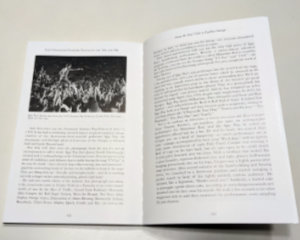
One act and one event also get their own chapters. The act, not surprisingly, is the Beatles who played Cincinnati twice; once at Cincinnati Gardens and once at Crosley Field. The event is the Cincinnati Summer Pop Festival of June 13, 1970. It was also held at Crosley Field and Rosen uses the chapter to mention that the Ohio Valley Jazz Festival took place there from 1964 to 1970. With acts like Traffic, Mountain, Grand Funk Railroad, and Bob Seger, the Pop Festival was a major event and Rosen can certainly be forgiven for stretching the ’50s and ’60s by a few months. Back in those days, people apparently sometimes brought pineapple upside-down cake and peanut butter to concerts giving fans something to remember Alice Cooper (cake) and Iggy Pop (peanut butter) by.
Rosen used some of his own memories in this book and combed through a lot of local papers and other publications. He also contacted many of the others who were actually there. Jim Tarbell, of Hyde Park Center and Ludlow Garage fame, provided the forward. He also provides a telling comment about loss at the end of the ’60s. Reflecting on rock becoming big business, he says, “It was baptism by fire to realize how quickly the whole scene changed from peace and love to money.”
Even though it’s not exactly about peace and love and money, the book’s final sentence does make a thoughtful observation on the loss of a major Cincinnati concert venue. “Crosley Field is now lost but is still dearly missed by fans of both Cincinnati baseball and Iggy Pop.”
Lost Cincinnati Concert Venues of the ’50s and ’60s: From the Surf Club to Ludlow Garage, Steven Rosen, The History Press (Jan 10, 2022), 6 x 9 inches, 176 pages, ISBN 978-1467147217
Available multiple places including Arcadia Publishing (History Press) but I suggest going straight to the guy who wrote it: StevenRosen.net.
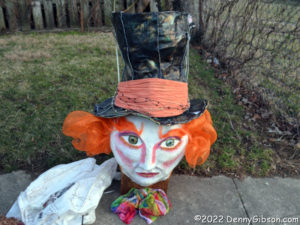 This is one of those embarrassing moments when I experience something for the first time that has been going on for years right under my nose and is so cool I should have been attending regularly. It’s the Mainstrasse Mardi Gras Parade in Covington, Kentucky. I’ve heard of Mardi Gras in Covington and possibly even heard there was a parade but I don’t remember. What I do remember is news reports about inebriated revelers trashing yards and peeing in bushes. It didn’t sound like a place I wanted to be. But this year I read about the parade with participants wearing gigantic papier-mâché heads and that very much sounded like something I wanted to see.
This is one of those embarrassing moments when I experience something for the first time that has been going on for years right under my nose and is so cool I should have been attending regularly. It’s the Mainstrasse Mardi Gras Parade in Covington, Kentucky. I’ve heard of Mardi Gras in Covington and possibly even heard there was a parade but I don’t remember. What I do remember is news reports about inebriated revelers trashing yards and peeing in bushes. It didn’t sound like a place I wanted to be. But this year I read about the parade with participants wearing gigantic papier-mâché heads and that very much sounded like something I wanted to see.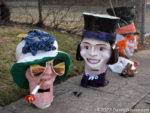
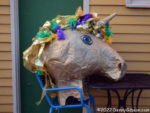
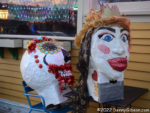 I reached the staging area with enough time to snap pictures of some of the big heads before they covered smaller heads.
I reached the staging area with enough time to snap pictures of some of the big heads before they covered smaller heads.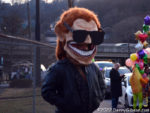
 Then got pictures of a few of those heads in place but not yet marching. I really don’t know just when this first began. One person I asked said, “At least ten years.” Another thought it started “around 2000”. I overheard someone telling a friend, “The last time I came down for this was twenty years ago”. I imagine I’ll eventually find something online that tells me, but not yet.
Then got pictures of a few of those heads in place but not yet marching. I really don’t know just when this first began. One person I asked said, “At least ten years.” Another thought it started “around 2000”. I overheard someone telling a friend, “The last time I came down for this was twenty years ago”. I imagine I’ll eventually find something online that tells me, but not yet.

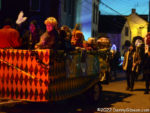 There were plenty of normal-sized heads in the parade and everybody was clearly having a lot of fun.
There were plenty of normal-sized heads in the parade and everybody was clearly having a lot of fun.
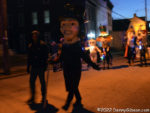
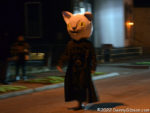 But it was the big heads that had gotten my attention and set the parade apart.
But it was the big heads that had gotten my attention and set the parade apart.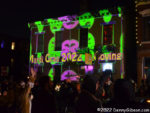 Most of the Mainstrasse restaurants and bars were fairly full before the parade started and became downright packed when it ended. Many had doormen posted to keep occupancy to legal levels. I moved away from the center of the festivities until I found a bar that was busy but not overcrowded and had one beer before heading home. I’ve absolutely nothing against partying in the streets for Mardi Gras but I’m too old and the street’s too cold.
Most of the Mainstrasse restaurants and bars were fairly full before the parade started and became downright packed when it ended. Many had doormen posted to keep occupancy to legal levels. I moved away from the center of the festivities until I found a bar that was busy but not overcrowded and had one beer before heading home. I’ve absolutely nothing against partying in the streets for Mardi Gras but I’m too old and the street’s too cold. 



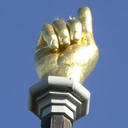









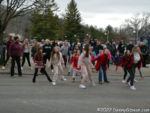
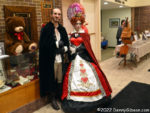
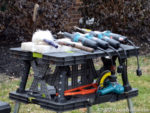
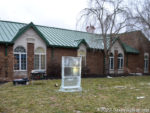
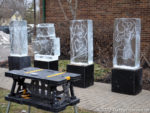
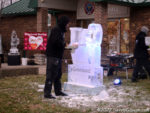
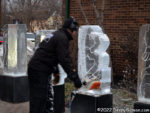


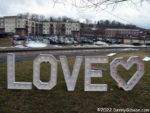
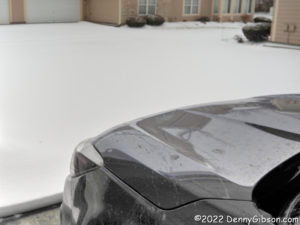
 Nearly four months ago, when one February day seemed as good as any other, I purchased a ticket to see Hamilton at the Schuster Center in Dayton, Ohio. On Thursday, as various alerts and other weather-related stories popped up, I thought the show might be canceled and took a look at the theater website where I found this banner displayed. The small print says, “All performances will go on as scheduled unless there is a Level 3 Snow Emergency in Montgomery County, Ohio.” Since purchasing the ticket, I had received a few emails with advice on parking and restaurants and some other details about attending the performance including one that arrived at noon on Thursday. Read about Ohio’s three levels of snow emergencies
Nearly four months ago, when one February day seemed as good as any other, I purchased a ticket to see Hamilton at the Schuster Center in Dayton, Ohio. On Thursday, as various alerts and other weather-related stories popped up, I thought the show might be canceled and took a look at the theater website where I found this banner displayed. The small print says, “All performances will go on as scheduled unless there is a Level 3 Snow Emergency in Montgomery County, Ohio.” Since purchasing the ticket, I had received a few emails with advice on parking and restaurants and some other details about attending the performance including one that arrived at noon on Thursday. Read about Ohio’s three levels of snow emergencies 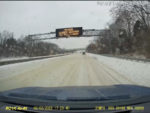
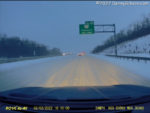
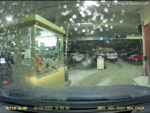
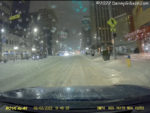

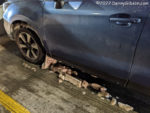
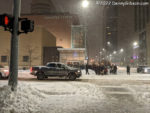
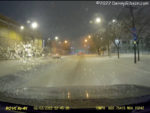

 Although I didn’t actually see it until Friday morning, this message was emailed about a quarter to 6:00 on Thursday. A similar message was posted to Facebook and the website, presumedly about the same time.
Although I didn’t actually see it until Friday morning, this message was emailed about a quarter to 6:00 on Thursday. A similar message was posted to Facebook and the website, presumedly about the same time.